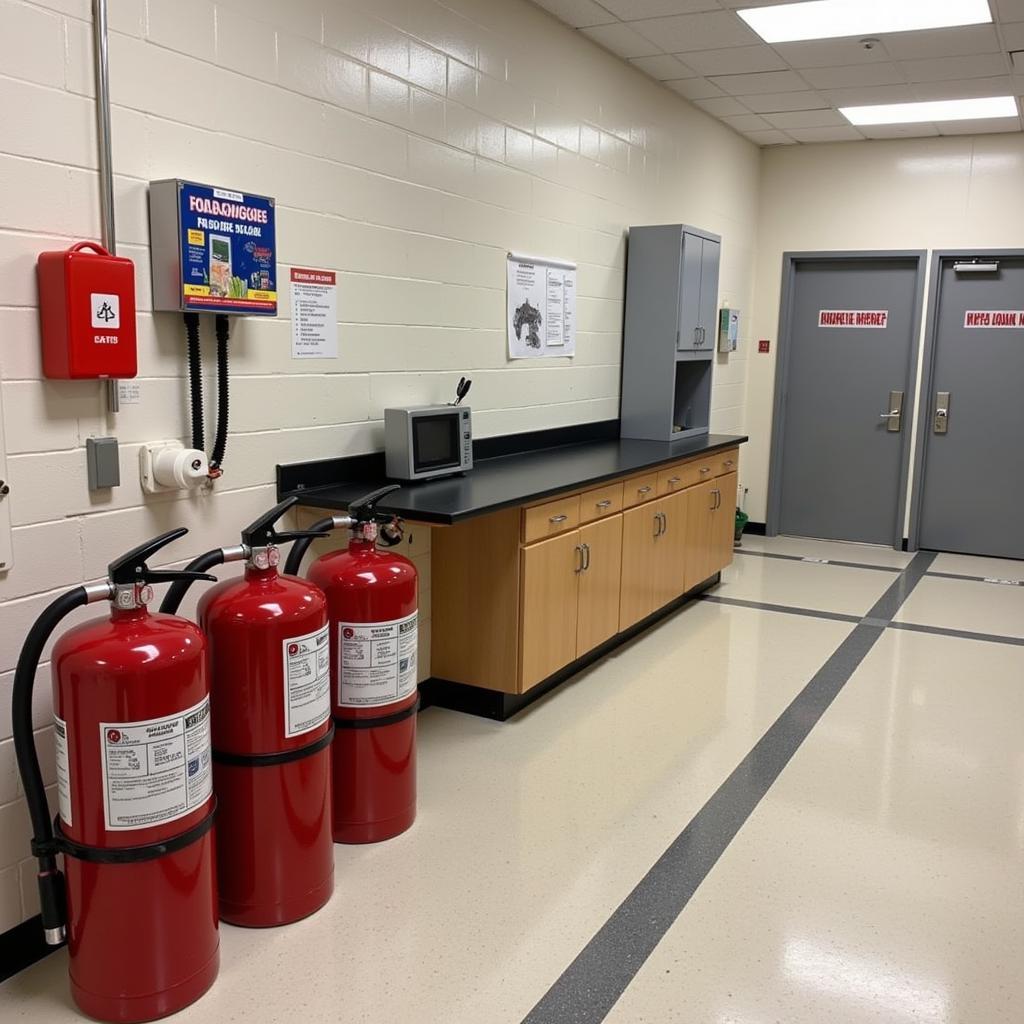Ensuring ASEAN safeguards in the school laboratory is crucial for the safety and well-being of students and educators. This article delves into the essential safety measures, best practices, and guidelines for maintaining a secure and productive learning environment in science laboratories across ASEAN nations.
Understanding the Importance of Lab Safety in ASEAN
Science education plays a vital role in the development of ASEAN nations. Hands-on learning in school laboratories is essential for fostering scientific curiosity and cultivating future innovators. However, these learning spaces also present potential hazards if not managed properly. Implementing robust ASEAN safeguards in the school laboratory is not merely a matter of compliance but a commitment to nurturing the next generation of scientists in a secure environment.
Common Hazards in School Laboratories
Several hazards can be found in a typical school laboratory:
- Chemical Hazards: These include corrosive substances, flammable liquids, and toxic gases. Proper handling, storage, and disposal are crucial.
- Biological Hazards: Experiments involving microorganisms, bacteria, and biological samples require stringent hygiene and safety protocols.
- Physical Hazards: Sharp objects, glassware, electrical equipment, and heat sources pose physical risks that must be addressed.
- Fire Hazards: The presence of flammable materials and heat sources makes fire safety paramount.
Implementing Effective ASEAN Safeguards
Implementing effective safeguards involves a multi-faceted approach, encompassing safety equipment, procedures, and training.
Essential Safety Equipment
Every school laboratory in ASEAN should be equipped with:
- Fire extinguishers: Strategically placed and readily accessible.
- First-aid kits: Well-stocked and regularly checked.
- Safety showers and eyewash stations: For immediate decontamination in case of chemical spills or splashes.
- Personal Protective Equipment (PPE): Gloves, goggles, lab coats, and respirators must be available and used appropriately.
- Fume hoods: To extract hazardous fumes and gases.
 Essential School Lab Safety Equipment
Essential School Lab Safety Equipment
Establishing Safety Procedures
Clear and comprehensive safety procedures are essential. These should cover:
- Chemical Handling: Detailed instructions for handling, storing, and disposing of chemicals.
- Emergency Procedures: Protocols for fire, chemical spills, and injuries.
- Waste Disposal: Guidelines for disposing of hazardous and non-hazardous waste.
- Equipment Operation: Safe operating procedures for all laboratory equipment.
Training and Education
Regular training and education for both teachers and students are crucial. This includes:
- Safety Orientation: Comprehensive introduction to laboratory safety procedures.
- Hazard Communication: Understanding and interpreting safety data sheets (SDS).
- Emergency Drills: Practicing emergency procedures to ensure preparedness.
- Regular Refresher Courses: Reinforcing safety knowledge and best practices.
“Consistent and comprehensive safety training is the cornerstone of a secure laboratory environment,” says Dr. Maria Santos, a leading science educator in the Philippines. “Empowering students with the knowledge and skills to identify and mitigate risks is an investment in their future.”
Promoting a Culture of Safety
Beyond equipment and procedures, fostering a culture of safety is paramount. This requires:
- Open Communication: Encouraging students to report near misses and potential hazards.
- Regular Inspections: Conducting routine safety inspections to identify and address potential risks.
- Continuous Improvement: Regularly reviewing and updating safety procedures based on best practices and feedback.
“Creating a safe laboratory environment isn’t just about following rules; it’s about instilling a sense of responsibility and vigilance in every student,” adds Dr. Nguyen Van Minh, a Vietnamese chemist and safety expert. “A proactive approach to safety is essential for preventing accidents and fostering a positive learning experience.”
Conclusion
ASEAN safeguards in the school laboratory are crucial for fostering a safe and productive learning environment. By implementing comprehensive safety measures, providing adequate training, and promoting a culture of safety, ASEAN nations can ensure the well-being of their students and empower them to become the next generation of scientific innovators.
FAQ
- What are the most common hazards in a school laboratory?
- What PPE should be used in a school laboratory?
- What should be included in a laboratory safety orientation?
- How often should safety inspections be conducted?
- What is the importance of a culture of safety in the lab?
- Where can I find more information about ASEAN laboratory safety standards?
- What are some examples of emergency procedures for a school lab?
Need assistance? Contact us at Phone Number: 0369020373, Email: [email protected] Or visit our address: Thon Ngoc Lien, Hiep Hoa, Bac Giang, Vietnam. We have a 24/7 customer support team.
